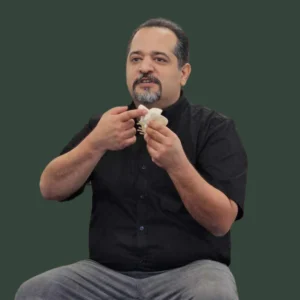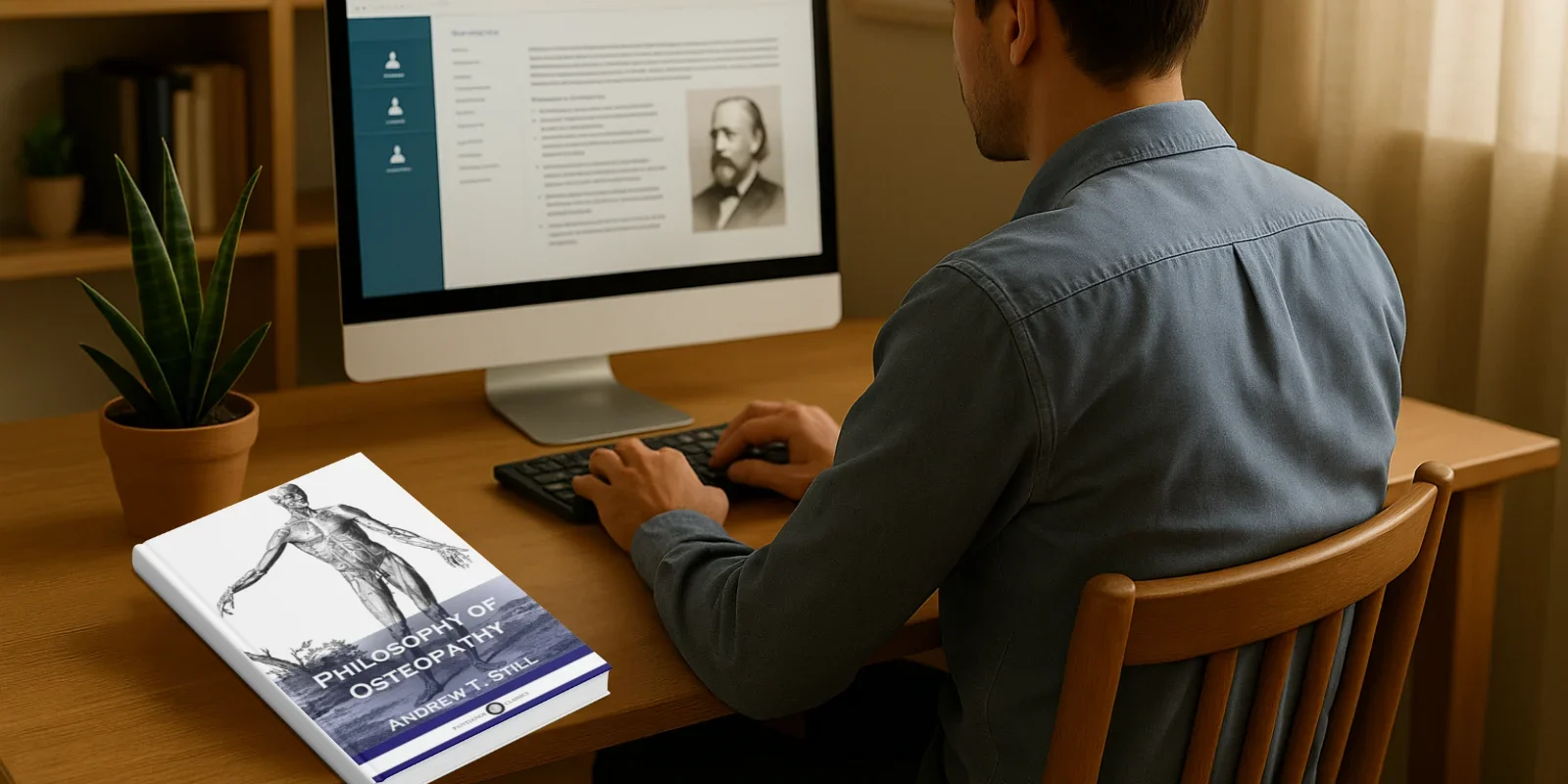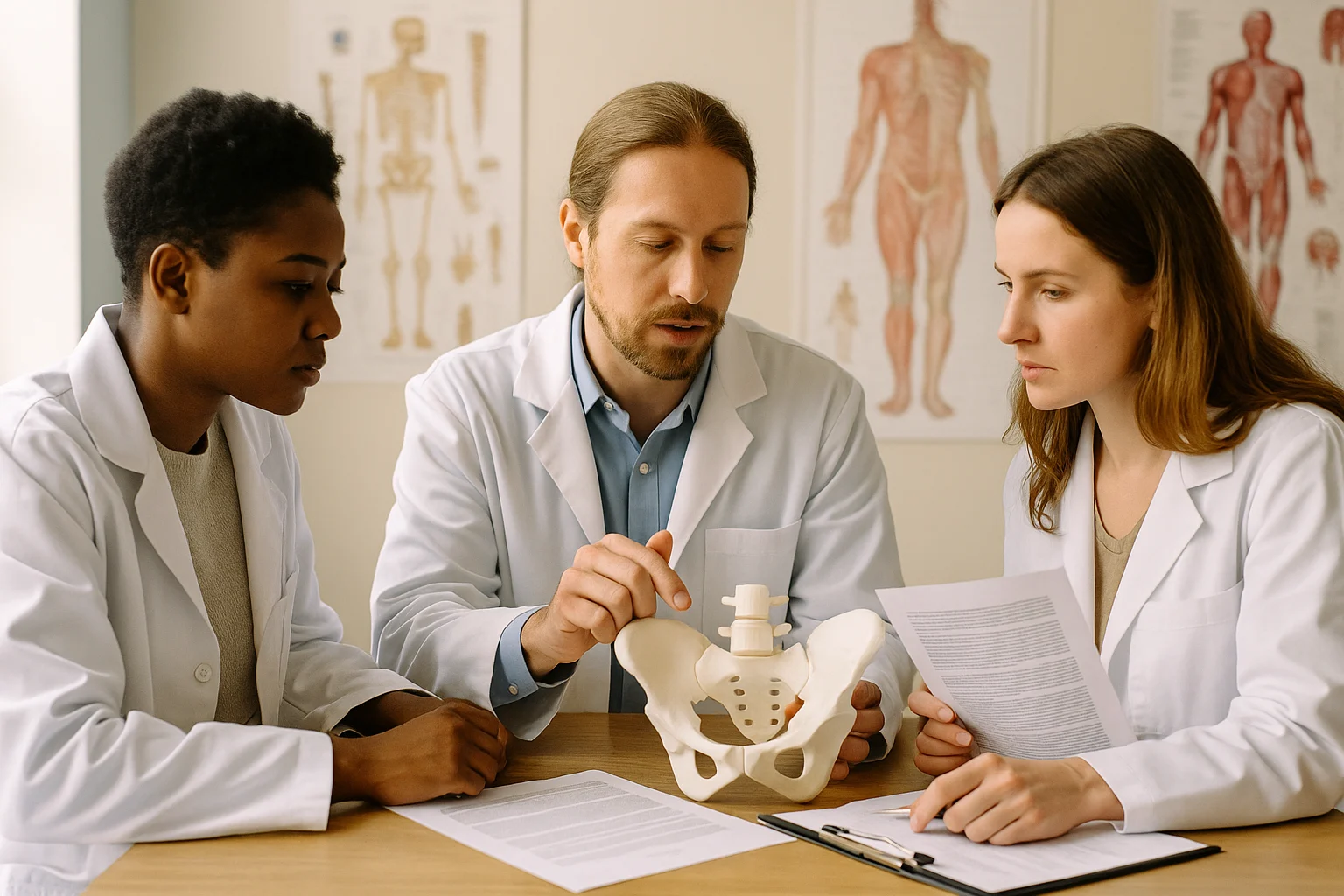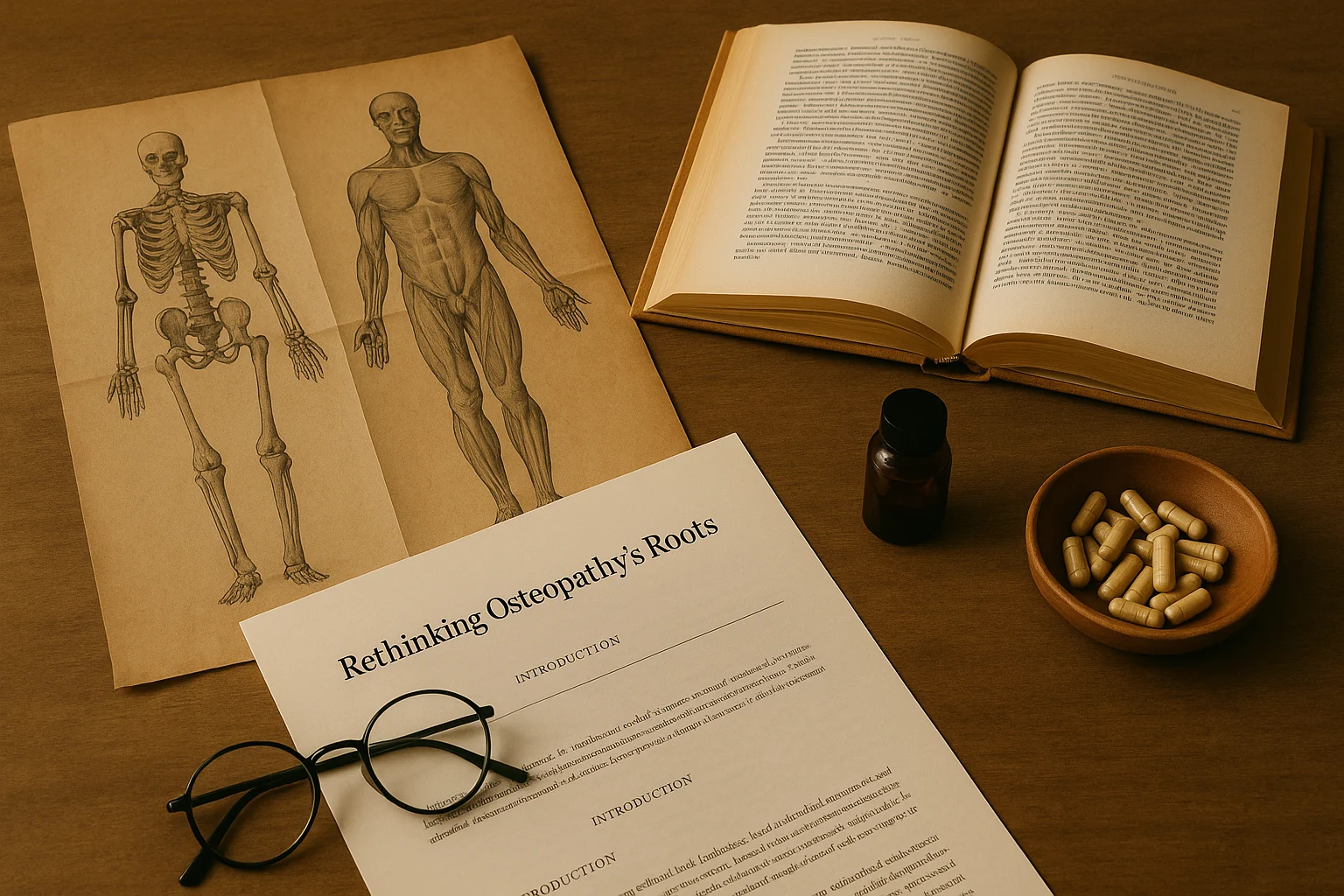Introduction: Reading Still in 2025
When I revisited A.T. Still’s The Philosophy of Osteopathy, I was struck once again by how deeply it resonates with my clinical work today. As a manual osteopath practicing in Canada today, my daily work is shaped by modern anatomy texts, continuing education, research on fascia and neurology, and a healthcare system filled with evidence-based expectations. And yet, in this book written in 1899, I found something that still rings true. It holds a profound respect for the body’s design and a call to look beyond symptoms toward the root causes of dysfunction.
It reminded me that, while science evolves, some foundational principles continue to guide how we treat and care for our patients.
A Philosophy, Not Just a Method
Still didn’t offer a set of techniques. He offered a worldview. His philosophy is rooted in the belief that the human body is intelligently designed and capable of healing itself when its structure is aligned and its functions are unobstructed.
He was deeply critical of the medicine of his time, which he referred to as “allopathy.” His concern was that medicine often focused on managing symptoms with drugs instead of addressing the structural causes of disease. That approach may feel outdated in tone, but the core idea remains valid today. Treatment should support restoration, not suppression.
In a time when quick fixes are common, Still’s philosophy encourages us to think more holistically and act with purpose.
Structure and Function: The Relationship That Endures
One of Still’s most quoted lines is that “structure governs function.” This relationship is not just philosophical. Today’s research supports it. Postural alignment, joint restriction, and fascial tension all influence blood flow, nerve signaling, and inflammatory responses.
As a manual osteopath, I see this play out daily. A patient with low back pain might show sacral torsion or iliac imbalance. A tight diaphragm can disrupt both respiration and digestion. These structural changes impact physiological function, just as Still described more than a century ago.
His emphasis on anatomy as both the starting and ending point of effective practice remains as important now as ever.
Fascia, the Forgotten Frontier
One of the most impressive elements of Still’s thinking was his emphasis on fascia. Long before the term was used in modern clinical conversations, Still described fascia as omnipresent and central to health and disease.
Today, we understand fascia as a connective matrix with sensory and mechanical roles. It communicates, distributes force, and influences inflammation and fluid movement. Still observed these roles through touch and reasoning rather than imaging or measurement. That kind of clinical intuition deserves respect.
Modern manual therapy, with its focus on fascial release, interoception, and tissue gliding, is continuing what Still began.
A Body Designed to Heal
Still believed the human body had an internal intelligence that could heal itself when free from obstruction. Our role, he believed, was to remove those obstructions. Whether structural, fluid-based, or neurological, these disruptions impair function.
In my own practice, that idea rings true. Whether I’m working with someone recovering from injury, managing stress-related dysfunction, or trying to improve postural stability, I return to the same goal. Remove the barriers and let the body do what it was designed to do.
What Still Got Wrong
Some of Still’s ideas, such as his views on infection and his criticism of surgery and pharmaceuticals, don’t fully align with what we know today. But that’s understandable. He was working in the context of 19th-century medicine, where harmful substances like mercury and opium were widely used.
Rather than discrediting him, this highlights his courage to question a system that was often doing more harm than good. His perspective challenges us to stay critical, keep learning, and never stop asking better questions.
Still in the Clinic Today
Reading The Philosophy of Osteopathy today doesn’t feel like studying outdated theory. It feels like reconnecting with the essence of what we do. In every treatment where I choose gentle, responsive care over force, or when I prioritize listening to the tissue over rushing through technique, I see Still’s influence.
Our language may have changed. We now speak of the autonomic nervous system, mechanotransduction, and neurovascular dynamics. But the foundational principles Still laid out still help guide effective, patient-centered care.
Final Note
To make this timeless work more accessible, I’ve included a podcast summary of the book at the end of this article. It’s ideal for practitioners who prefer an easy-to-digest format or want to revisit the text while on the go.
If you’ve never read the book and you’re interested in the roots of osteopathy, or if it’s been a while since you last picked it up, I highly recommend going back to it. It’s not just a historical document. It’s a reminder of the foundational values that continue to shape our approach to healing.
You can read the full book online for free at Project Gutenberg:
🔗 Read it here
Or purchase a printed copy from Amazon if you’d like to keep it in your clinic or library.
Whether you choose to read or listen, I hope it reminds you—as it reminded me—why we do what we do.








